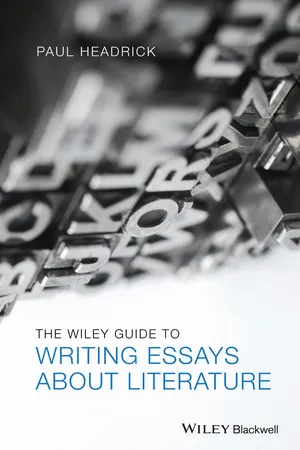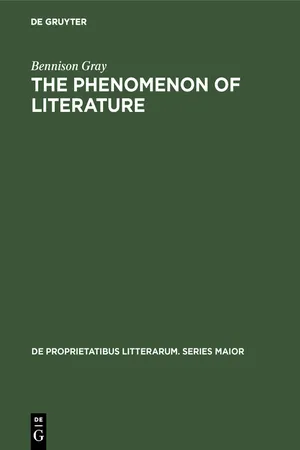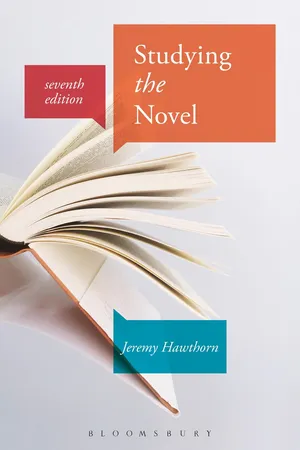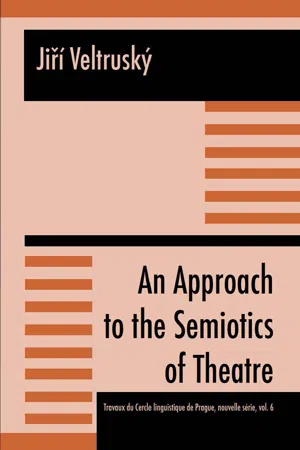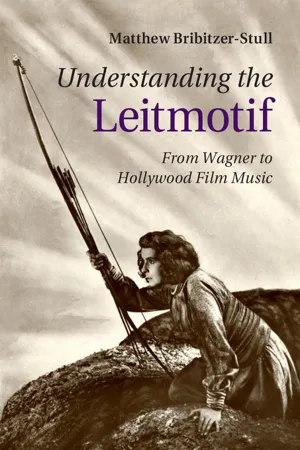Literature
Theme
A theme in literature refers to the central idea or message that the author conveys through the story. It is the underlying meaning or insight that the reader can derive from the characters, plot, and setting. Themes can be universal and timeless, addressing fundamental aspects of the human experience.
Written by Perlego with AI-assistance
Related key terms
1 of 5
6 Key excerpts on "Theme"
- Noël Carroll, John Gibson, Noël Carroll, John Gibson(Authors)
- 2015(Publication Date)
- Routledge(Publisher)
Literary Theme is a usefully loose notion, in at least two senses. As a theoretical term, it has flexibility that allows us to talk about certain aspects of literature—what literary works are about, how they hang together as works, what is important and good about them—without resolving further questions on which there is disagreement. The latter concern, centrally, whether literary works make claims and offer support for those claims. How directly and responsibly do literary Themes make “real-world” commitments? And second, there is looseness in literary Themes themselves, as bearers of content that seem to have a built-in openness to movement of thought, to expansion, contraction and change of perspective. I will consider views about what a Theme is and how it functions, and what grounds Themes in a work. I will then respond broadly to the question of their real-world grip. Skeptics about the idea that Theme engages us in responsible cognitive activity are right that truth is not an essential thematic value, but the phenomena of Theme in literature do include concerns for truth and for other forms of cognitive value. What we do with literary Themes represents a model of what it is to think about something, and this model speaks well to various aspects of human nature and conditions of life, in particular our need and capacity to change perspectives and interests. Literary thematic thinking of course has constraints and possibilities that are specific to engaging with literary works, so it does not transfer straightforwardly to thinking about our lives. Nonetheless, thinking about literary Themes has a fruitful relation to thinking about and understanding life.II What Literary Themes Are and What They Do
A Theme is what a literary work is about, at a more or less general, abstract level. The notion of this general about-ness typically carries with it the further idea that Themes articulate what works are “significantly or importantly about” (Brinker 1993 : 22). “Being significantly about” is ambiguous between significance within the context of the work and significance within human concerns overall. The primary point of the term is to identify the former—what is particularly important to what a work is about (allowing that a Theme in this sense might be clothes maintenance or sneezing)—but the other meaning, expressing a norm that literary Themes should be of relatively deep significance to human life, is usually in force as well. We thus view grasp of Theme as important to understanding a literary work, but it also affects evaluation. It can count for or against a work that one takes its Themes to be genuinely important or relatively trivial in the human scheme of things (Tomashevsky 1965 : 63–5; Lamarque and Olsen 1994 : 426–34).The generality of Theme contrasts with the less abstract kind of about-ness that depends on whatever events and experiences are depicted in a work, often referred to as the “subject.” If a work tells of Alice struggling with moths in her woollens, or has James explaining how to fold a shirt, the work has that struggle and that act of explanation as elements of its subject matter, while clothes maintenance could be an implicit Theme. “Subject is what the particular descriptions at the literal or report level are of: the ‘chunks of experience’ which the work presents to the reader” (Lamarque and Olsen 1994 : 286; Beardsley 1981 : 401–4). The distinction between subject and Theme is not a sharp one, since the move to thematic generality can begin by generalizing about the subject matter. But a work must explicitly present at least some of its subject matter (which can then be an inferential basis for further subject matter) to the reader’s attention, while Themes need not be, and usually are not, directly presented or identified within a literary work. The subject/Theme, particular/general distinctions are not inviolable. St. Petersburg is considered a Theme in Dostoevsky (Brinker 1993 : 24), and Auerbach finds the Theme of Woolf’s To the Lighthouse to be “Mrs. Ramsay, her beauty, the enigma of her character” (Auerbach 1953 : 534). It seems we can say that, if Mrs. Ramsay and St. Petersburg are- Prof. Paul Headrick(Author)
- 2013(Publication Date)
- Wiley-Blackwell(Publisher)
concrete social concerns. In this book, the term “Theme” does not suggest such limitations. There are a number of alternatives to the word “Theme,” such as “an idea indirectly expressed by the text,” “an argument that the text implies,” or “an ideology the text endorses.” If your instructor is not using this book, you should discover what terminology she or he prefers.Key Points- A Theme is an idea about the world, expressed by a literary text, of general importance to people.
- A statement of Theme must refer directly to a literary text.
- Descriptions of characters are never statements of Theme.
- A statement of Theme cannot apply only to a specific group of people.
- A topic of a text is not a Theme.
Debating Theme
Debating with the text: agreeing and disagreeing with Themes
You do not need to agree with the Themes expressed by the texts you analyze. If you read enough, you will inevitably encounter texts that express Themes with which you disagree. Literature is written, after all, by different people, living in different eras, influenced by different cultures, and with different personal experiences. Literary texts will inevitably express a range of ideas.Sometimes students feel that they have to agree with the Themes expressed by the works they study because they believe that their instructors agree with them. In fact, critics (including your instructors) frequently teach and analyze texts that express ideas with which they strongly disagree. (For example, a critic who is an atheist may analyze a text that implies that God exists, and a critic with religious beliefs may analyze a text that suggests that God does not exist.) You should not try to show that a text's Theme is true or false, or even particularly relevant or important for a certain context (such as “today's society”). Critics' opinions of the ideas expressed by a text may be implicit in their analyses, but those opinions are not the point of the analyses.- eBook - PDF
- Bennison Gray(Author)
- 2018(Publication Date)
- De Gruyter Mouton(Publisher)
Looked at from the creator's point of view, the Theme is the organizing principle of the literary work. Looked at from the point of view of the reader or listener, it is the meaning of the work. THE INTERPRETATION OF LITERATURE 447 What follows from tius conception of the meaning of a literary work is that each work has only one basic meaning, one guiding principle of organization - the Theme. If this were not the case, if there were multiple Themes or multiple meanings for an unverifi-able statement of an event, the statement would be incoherent. No one reason would account for this word, this assertion, or this incident being stated before or after another word, assertion, or incident. What Joyce tried to do in Finnegans Wake - to say and mean everything simultaneously - had predictable results. One of the really puzzling things about modern criticism is its conviction, on the one hand, that a literary work must be polysemous and yet, on the other hand, that a work is an organic whole, in which the parts are meaningful only in relation to the whole and the whole is meaningful only in terms of its parts. If we drop the pseudo-biological analogy implied in organic, this latter principle is a perfectly sound one. But it is also the contrary of polysemous-ness. And it is not confined to great works. It is merely the way in which fictional events of whatever value are coherently created, stated, and understood. If then the literary work has a Theme, how is it possible to know this, how is it possible to determine what the particular meaning is, to interpret the work ? The point or meaning or Theme of a work is understood when the event presented is recognized as being analogous to an aspect of human behavior. This does not mean that the characters depicted have to be human or even creatural. The first-person, participant, narrator of Edwin A. Abbott's Flatland is a square. - eBook - PDF
- Jeremy Hawthorn(Author)
- 2016(Publication Date)
- Bloomsbury Academic(Publisher)
In practice, of course, it is hard to write about Themes without taking account of formal matters, and although it may be easier to write about formal issues without confronting thematic questions, few studies of the novel are flushed clean of all interest in matters thematic. Theme and thesis Some critics find it useful to distinguish between Theme and thesis. The simple distinction here is that although both pose questions, a thesis also suggests or argues for answers. A Theme, in contrast, can involve establishing a set of issues, problems, or questions without any attempt to provide a rationale or answer to satisfy the demands these make of the reader. Traditionally, novels dominated by a thesis have been valued less highly than those in which certain Themes are raised or treated: in contrast to earlier generations Studying the Novel 146 of readers perhaps, some recent critics have preferred our novels not to be overtly didactic, to be open-ended rather than pointed toward solutions at which the author has already arrived. One problem with distinguishing between Theme and thesis is that for some commentators “Theme” is something of an umbrella concept and includes what we have just termed “thesis.” If we define Theme in the former, weaker sense (distinguishing it from thesis), then we will not be surprised to discover that a large and complex novel can have a range of varied Themes attributed to it. Charles Dickens’s Bleak House , for instance, has been variously interpreted as containing the Themes of “parental responsibility,” “the heartlessness of the law,” “the evil of ‘causes’,” “the destructiveness of choosing money and position rather than love,” “the centrality of writing to Victorian society,” and many more. It needs to be remembered that a complex novel is likely to be susceptible to analysis in terms of numerous different—perhaps interlocking—Themes. Overt and covert Themes A Theme may be overt or covert. - eBook - PDF
- Ji?í Veltruský, Jiří Veltruský(Authors)
- 2014(Publication Date)
- Masarykova univerzita(Publisher)
The thematic components of the literary work are meanings: material and psychological realities – facts and thoughts – turn into meanings in all utter- ances of whatever kind. So the thematic elements are not qualitatively differ- ent from the linguistic meanings. What distinguishes them is that they have a closer and more direct relationship to the reality the work refers to, and there- fore contribute in a different manner to its semantic construction (Mukařovský 1938b and 1944–45/1971). The motifs and the connections between them emerge from the linguistic meanings. At the same time, they tend to break free from these meanings: our mem- ory can retain the Theme of a work even when we have forgotten the language through which it was presented. What is more, the Theme may so captivate the reader that the language with all its subtleties will fail to cross the threshold of his consciousness. The reader then tends to attribute something like a docu- mentary quality to the literary text – to become what Albert Thibaudet (1925: XXI–XXV) called a “viveur de romans”, one who as it were lives the novels he reads – and sometimes even to experience the imaginary reality the work refers to through its thematic meanings as if it were an objective reality. However, this kind of illusion does not always withstand the test of factual truth. Ac- cording to Mukařovský (1936a: 59), the question of whether what the text recounts actually happened lies beyond the reader’s horizon of interest. But this horizon may change quite radically once objective reality actually comes into play. Thus Mukařovský himself observes that in historical novels a distinction is often drawn between the fictional events and characters which are placed in the foreground and the factual ones which remain in the background (Ibid.: 58). In general, when a literary text refers to something that the reader identifies as an actual reality, the question of its truthfulness is likely to arise. - eBook - PDF
Understanding the Leitmotif
From Wagner to Hollywood Film Music
- Matthew Bribitzer-Stull(Author)
- 2015(Publication Date)
- Cambridge University Press(Publisher)
Although it may not necessarily have a vocal or singable contour, it has an unmistakable musical identity. 20 Better, at least, on the face of it, but upon closer examination, this defin- ition leaves much unanswered. The issue of what comprises a musical Theme is exceedingly more complex than the preceding quotation suggests. How long is a Theme and where are its boundaries? What differentiates “Theme” from related terms like “motive,” “melody,” or “phrase?” How much must a Theme interact with a work’s construction of tonality and musical form? How many of a Theme’s parameters can be changed before it is perceived as a new entity altogether? Most of us would agree that we know a Theme when we hear one (recalling Justice Potter Stewart), and yet we remain unable to formulate a cogent definition. Even Schenker – the architect of our most powerful theory of tonality – doesn’t propose or imply a theory of thematic construction or relations. 21 As good a place to begin as any is by distinguishing our emergent understanding of “Theme” from other related musical concepts. Themes are often understood to subsume smaller musical objects (melodies, motives, pitches, etc.) and to be, in turn, subsumed by larger ones (phrases, periods, sections, movements, etc.). The role of the Theme is somewhat analogous to the role of the clause in prose. Just as clauses include phonemes and words and are in turn included in sentences, paragraphs, scenes, chapters, and acts, so too do Themes occupy something of a mid- point in the continuum of musical entity lengths. Coming to grips with these mid-length entities is central to artistic understanding since they most often provide our first and easiest access to a new work.
Index pages curate the most relevant extracts from our library of academic textbooks. They’ve been created using an in-house natural language model (NLM), each adding context and meaning to key research topics.

